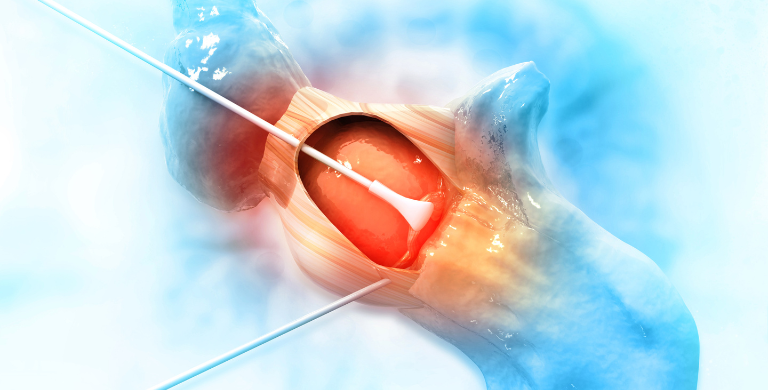While we all experience aches and pains as we get older, joint pain or stiffness could signal something more severe. Over time, joints experience wear and tear, referred to as joint degeneration. The most common cause of joint degeneration is arthritis, but trauma, autoimmune disorders, or medications can also damage joints. Worn-out joints may need to be replaced through surgery.
What is a joint replacement?
Joint replacement surgery involves removing the damaged joint and replacing it with a synthetic or artificial one made of metal, plastic, ceramic, or a combination of these materials. The joints that are most replaced are hips and knees, but other joints that can be replaced are shoulders, elbows, ankles, and fingers. Sometimes a surgeon will replace the entire joint, referred to as a total joint replacement, and other times a surgeon will opt to replace only the damaged parts of a joint, referred to as a partial joint replacement.
As you consider your options to address joint problems, you may want to review these signals that it is time for a joint replacement. Whether to replace a joint is a personal decision you should make with your doctor. The most important factor in choosing to replace a knee or hip is how much it hurts and how much it affects your life. Many people with joint pain put the decision off or are not sure when the time is right. If you are experiencing chronic, debilitating pain affecting your life, joint replacement might be right for you. Here are some of the indications for joint replacement:
Knee replacement surgery
The knee is the most commonly replaced joint in the body, typically due to advanced osteoarthritis. Because the knee joint bears the most weight, it’s most affected by arthritis. During knee replacement surgery, damaged cartilage and bone are removed from the kneecap, thighbone, and shinbone and replaced with a primarily metal implant (or prosthesis) of high-grade plastics, polymers, and metal parts. Depending on the surgical technique, you’ll be under general anaesthesia or regional anaesthesia in which strategic nerve blocks temporarily disable your pain receptors for approximately 2 hours.
Signs you may need a knee replacement
- Chronic pain – lasting at least six months
- Knee pain that makes it difficult to walk, climb stairs, stand up from a seated position, or participate in normal daily activities.
- Moderate or severe pain even while resting
- Your leg bows in or out
- You have severe or continuous knee stiffness
- Tenderness or swelling doesn’t improve with rest or medication
- Bone damage such as severe arthritis, specifically osteoarthritis.
Hip replacement surgery
Total hip replacement is also known as total hip arthroplasty, a surgical procedure in which the bone and cartilage of the hip joint are replaced with synthetic material. The hip joint is a ball-and-socket joint that can become damaged or diseased, which may cause debilitating pain and make daily movement and activity impossible without a cane or wheelchair. The “socket” is the cup-shaped part of the pelvis (the acetabulum), and the “ball” is the head of the femur (thighbone). During a total hip replacement procedure, both elements are replaced with an artificial ceramic or plastic cup (an acetabular prosthesis) and a metallic ball and stem (a femoral prosthesis).
Once those prosthetic parts are in position, the surgeon usually fixes them in place with methyl methacrylate, a bone cement. However, there is also an option for a “cementless” hip replacement that allows the femur bone to grow into the prosthetic stem—this procedure has a longer lifespan and is preferred for younger patients who require a hip replacement.
Signs you may need hip replacement:
- Pain prevents you from walking or bending the joint.
- Severe stiffness makes putting on or taking off socks or shoes difficult.
- You have continuous pain with little interruption, including at night or rest.
- Stiffness and pain prevent you from lifting your leg.
- Severe osteoarthritis, which involves the deterioration of joint cartilage.
- Nonsurgical treatments don’t help relieve pain and stiffness.
Each joint replacement surgery is different. How long it takes depends on how badly the joint is damaged and how the surgery is done. Your doctor or someone on your doctor’s team will inform you how to prepare for surgery, how long it will take, and what to expect in the hours after surgery.
The risks of joint surgery will depend on your overall health, the health of your joints before surgery, and the type of surgery done.
After surgery, it is important to follow your doctor’s advice about what to eat, how to take your medicines, and how to exercise. Talk with your doctor about any pain or trouble moving.
Joint replacement is usually a success in most people who have it. When problems do occur, most are treatable. Possible problems include infection, blood clots, loosening of the new joint, and nerve and blood vessel injuries.
If you’ve reached the point where you don’t want to put up with the pain anymore, and you want to get back to a needed or favourite activity, consider making an appointment to consult with an orthopaedic surgeon.
5 habits to preserve your joints
If joints are not yet bad enough for surgery, you may be able to preserve them or reduce pain if you:
- Maintain a healthy weight. Losing 5 kilos takes 20 kilograms of pressure off the knees.
- A diet low in processed foods and saturated fats and rich in vegetables, fruits, fish, nuts, and beans has anti-inflammatory powers.
- Choose low-impact workouts. Gentle-on-the-joints workouts include swimming, biking, elliptical, rowing, and yoga. Having a strong core can ease joint pain.
- Stop smoking. Smoking affects bones, joints, and connective tissue, increasing injury and disease risk.
- Stand and sit straight. Align your spine by practicing good posture, which reduces strain and pressure on other joints.
Intercare Sub-acute Rehabilitation Hospitals specialises in orthopedic rehabilitation such as joint replacement. Learn more here.
Read next: Osteoporosis
Sources
- Mayo Clinic: www.mayoclinichealthsystem.org/hometown-health/speaking-of-health/top-5-reasons-for-joint-replacement
- The Orthopedic & Sports Medicine Institute: www.osmifw.com/orthopedic-diseases-disorders/orthopedic-total-joint-replacement/when-is-joint-replacement-necessary
- Cleveland Clinic: https://my.clevelandclinic.org/health/treatments/21649-arthroplasty-joint-replacement
Fostering recovery and restoring health
The four sub-acute rehabilitation hospitals feature 36 to 52 beds, ensuring personalised attention and an intimate healing environment. Here, patients work towards regaining their strength, mobility, and independence under our multidisciplinary team of experienced professionals, including general medical practitioners, case managers, physiatrists, nurses, physiotherapists, occupational therapists, speech therapists, psychologists, dieticians and social workers. They all work together to create comprehensive, customised treatment plans.
Recover in an environment that offers best-practice care, facilities and comfort.












